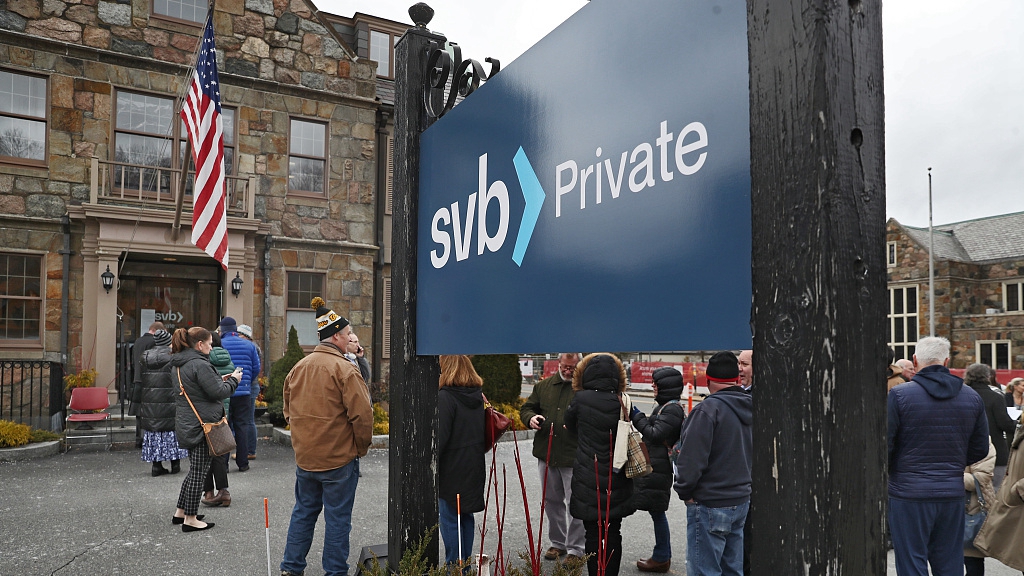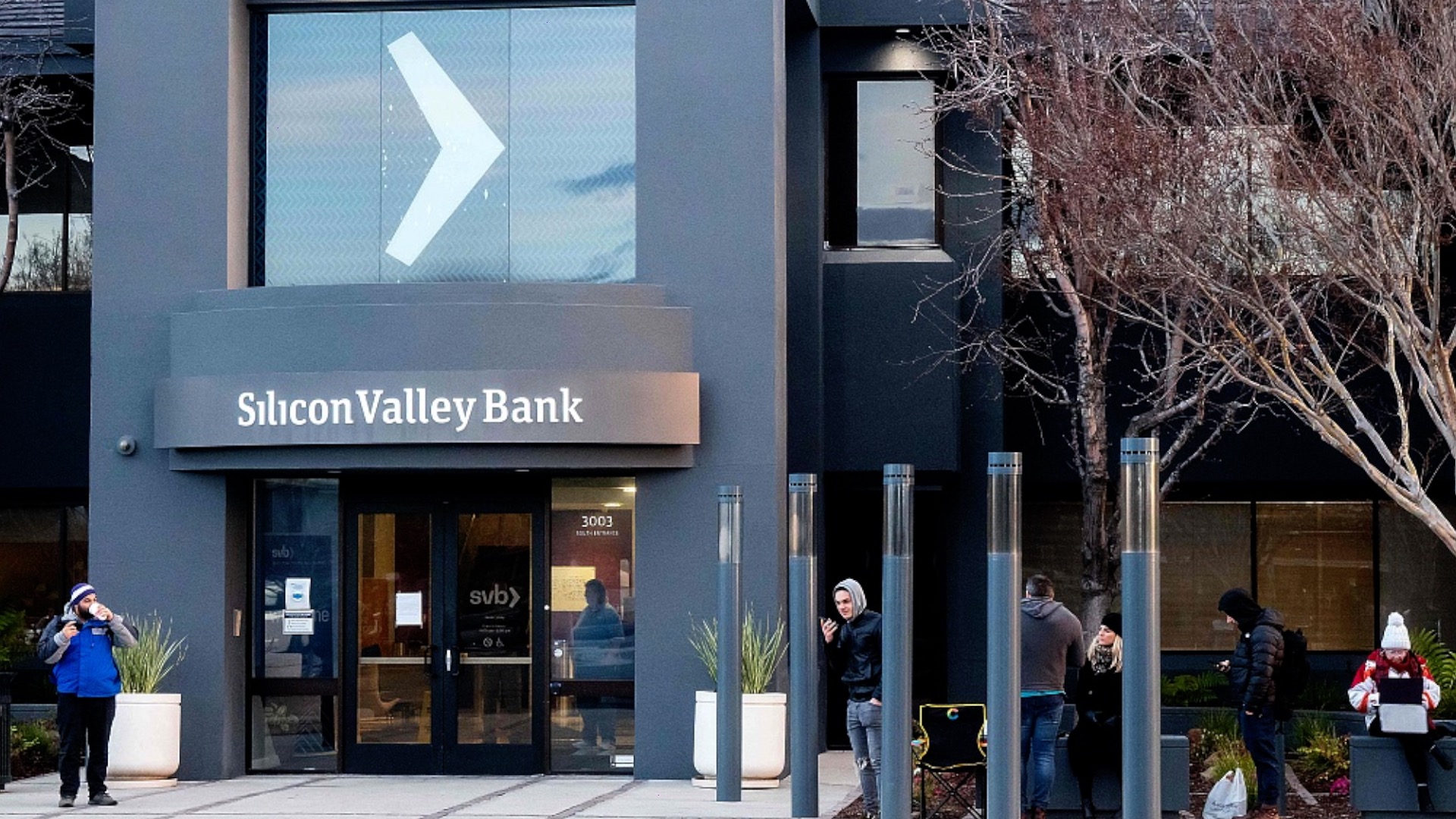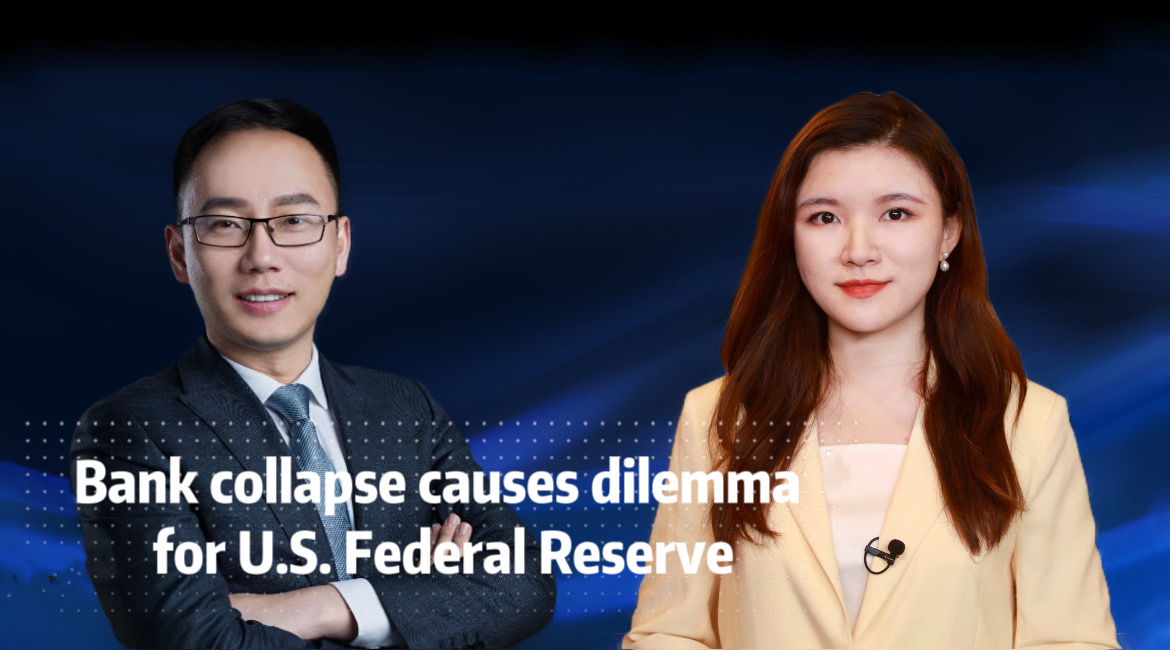
Customers line up at a Silicon Valley Bank in Massachusetts, U.S., March 12, 2023. /CFP
Customers line up at a Silicon Valley Bank in Massachusetts, U.S., March 12, 2023. /CFP
The Federal Reserve has issued repeated warnings to Silicon Valley Bank (SVB) on its risk management ability which can be traced back to 2019, according to a Wall Street Journal report on Sunday.
SVB was ranked the 16th biggest bank in the U.S. before going under within the span of 48 hours this month, making it the second-largest bank to fall in U.S. history.
The Fed issued a Matter Requiring Attention to the startup-focused lender over its risk management systems in January 2019 when the bank was still $70 billion in size, the Journal reported.
The bank's assets grew to $114 billion in 2020. That's when the Fed issued a more serious warning on its risk control system that required corrections and was subjected to qualified enforcement from regulators.
However, the red flags issued didn't stop SVB's speedy expansion to about $209 billion in size in 2021, almost doubled from a year earlier.
The bank's problem was apparent months before its collapse. In September 2022, the market value of its held-to-maturity bonds was $15.9 billion below its balance sheet value and slightly above its stock value at the time.
SVB was taken over by the Federal Deposit Insurance Corporation (FDIC) on March 10. FDIC later announced on Monday that it plans to break up the lender and conduct separate sales of its traditional deposits unit and private bank.
01:54

Fears spread
The sudden collapse of SVB stormed the U.S. banking sector and evoked memories of the 2008 financial crisis. Former FDIC chair Sheila Bair warned that the banking sector is witnessing a "Bear Stearns moment" in an interview last week.
Investment bank Bear Stearns narrowly escaped bankruptcy through a government-backed sale to JP Morgan Chase in March 2008, a prelude to the global financial crisis.
Almost exactly 15 years later, Jamie Dimon, CEO of JPMorgan Chase, is leading discussions with other banks to rescue First Republic Bank through an investment, according to the Wall Street Journal on Monday.
Shares of First Republic dived 46 percent on Monday as investors fretted about its fate.
Economists found that 186 U.S. banks may be prone to risks similar to SVB in a study published last week. Data suggested that the recent declines in bank asset values caused by Fed rate hikes, have "very significantly" increased the fragility of the U.S. banking system, economists from universities including Southern California and Northwestern wrote in a paper submitted to the Social Science Research Network.
02:54

Fed dilemma
The Fed is presented with the compounded problem of an evolving banking crisis and red-hot inflation. It has to decide between prioritizing financial stability or price stability in the Wednesday meeting where it announces the latest policy rate decisions.
In a bid to tame inflation, over the past year, the Fed has raised interest rates at the fastest speed since the 1980s. Analysts attributed the rapid rise in rates after years of cheap borrowing costs as the prime reason for current banking sector troubles.